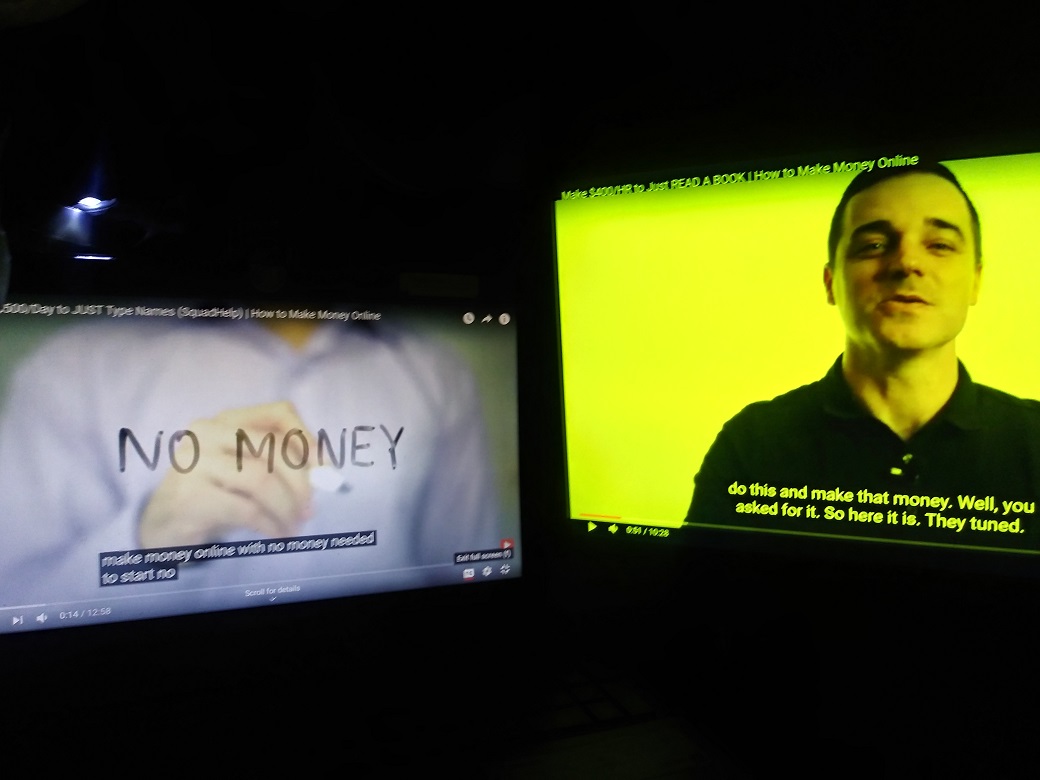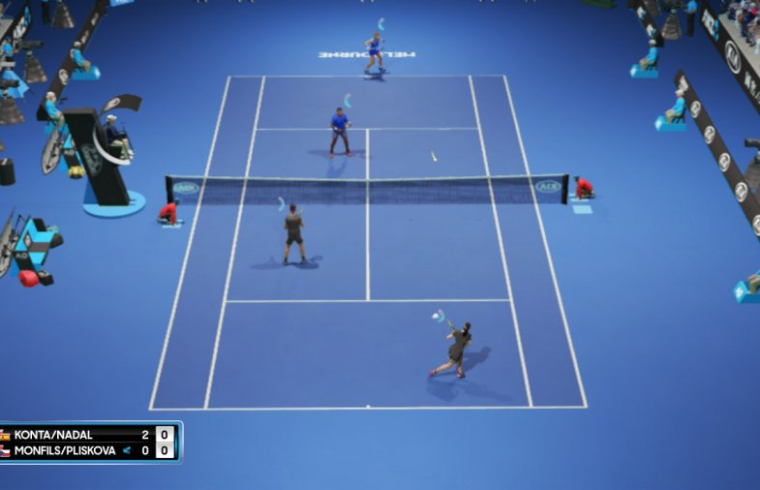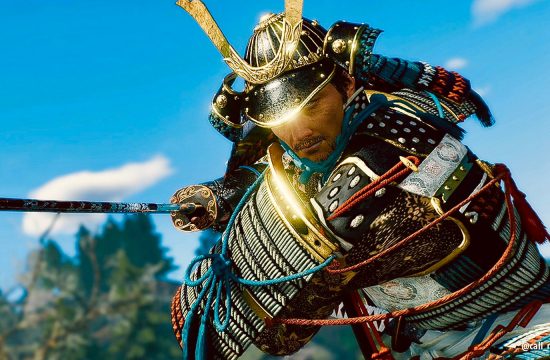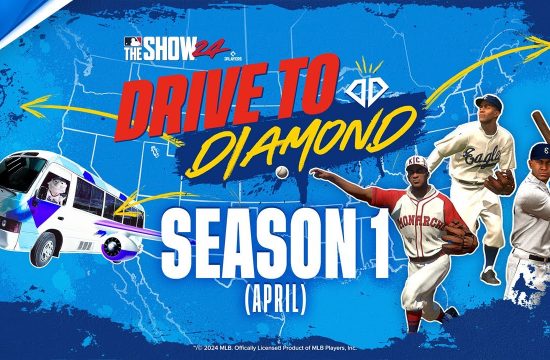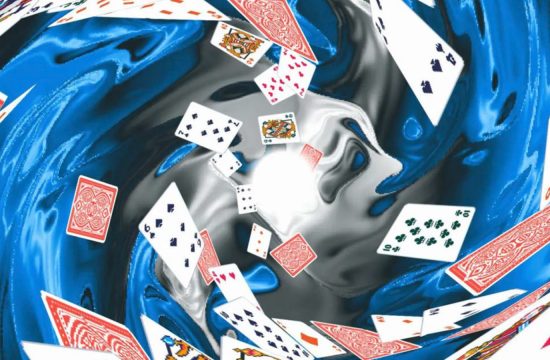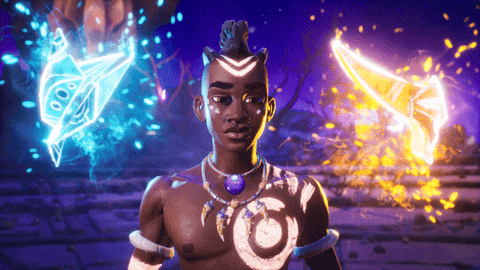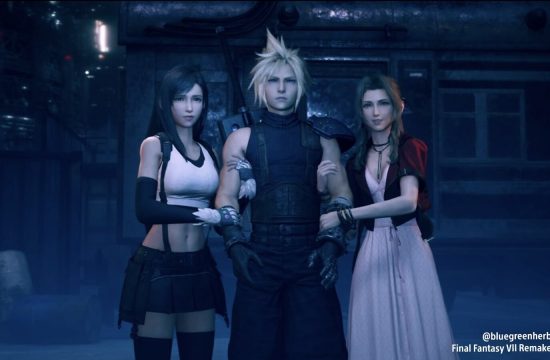Despite the fact that there are now officially more games on the Switch eShop than there are people living on the planet (citation needed), it’s fair to say tennis fans have severely limited options when it comes to games on the system.
Sure, Mario Tennis Aces is great and all, but those looking for a more serious representation of the sport are pretty much stuck with Tennis World Tour, which is about as entertaining as catching a Roger Federer smash full in the face. With the racquet, not the ball. The glory days of Virtua Tennis, Top Spin and even Wii Sports seem to be gone now, so what are tennis fans to do?
Step forward AO Tennis 2, an officially-licensed game based on the Australian Open, developed by Melbourne-based Big Ant Studios. It promises to fill that tennis ball shaped hole in Switch owners’ libraries and it juuuust about manages it, though it’s certainly got its fair share of rough edges – sometimes literally.
Naturally, given its title, AO Tennis 2 contains a full recreation of the Australian Open event, including polygonal recreations of Melbourne Park and its various courts: the Rod Laver Arena, Melbourne Arena, Margaret Court Arena and Show Court 2 and 3, as well as one of the smaller 500-seat courts (for matches featuring less well-known players). It’s all impressively accurate, right down to the fact that Andy Murray isn’t in it.
Most big names aren’t in here, to be fair, with only a handful of exceptions. There are 25 real-life players to choose from – 12 men and 13 women – and while it’s clear that a game with a relatively modest budget like this wasn’t going to feature the entire ATP and WTA top 10, some of the entries are still a little odd.
In terms of men, the big name who absolutely is present and accounted for is world number one Rafael Nadal. After him, the next highest-ranked players are Gael Monfis and David Goffin, who are currently ranked 10th and 11th respectively. That means no Federer, no Djokovic, no Medvedev and so on. The rest are a mixed bag, some of whom are probably unknown to even tennis die-hards.
South African player Kevin Anderson is in here, who’s currently sitting at the heady heights of 121st in the world, and while the UK is still represented despite the absence of Andy Murray; it’s by Kyle Edmund, who’s ranked 69th, which is nice and all but slightly underwhelming. More bewildering is the game’s Australian men’s representative: while we fully appreciate that a game set in Australia and made by an Australian developer is going to have to include one of its own countrymen to the roster, we’d have hoped they could have done better than Thanasi Kokkinakis, who’s currently ranked 199th. There are 11 Aussies ranked higher than him in real life at the moment.
The women’s roster fares a little better, in that both the 1st and 2nd ranked players (Ash Barty and Karolina Pliskova) are included: it probably helps that Barty’s Australian, too. Most of the others are from the top 20 (including the UK’s Johanna Konta) but there are still a few odd outsiders, like Monic Puig (ranked 77th) and another wildly left-field Australian pick, Daria Gavrilova: she’s currently 241st in the world, so her neighbours probably don’t even know who she is. Naturally, there are still some notable names missing here, so there’s no Naomi Osaka and no Serena Williams.
Thankfully, this can at least be remedied to some extent by the player creation feature, which lets you build your own stars using a needlessly complicated series of facial sliders. If you’re comfortable tweaking your player’s masseter depth, orbicularis oris intensity, nasolabial furrow and malar fat pad – yes, really – then go for it; otherwise, you may want to head to the game’s Academy section where a bunch of lovely other gamers have already done the hard work for you.
The Academy contains user-made creations, which crucially also includes all those uploaded for the previous AO Tennis game on PS4 and Xbox One. That means you already have around 20,000 created players to choose from, many of whom look pretty realistic; you can get decent likenesses of Murray, Federer, Williams and everyone else who’s missing this way, and it’s all relatively pain-free.
It isn’t just players you can find at the Academy, either. There’s also a logo creator, where you can upload your own designs to be added to created players’ uniforms, as well as a ridiculously-detailed venue creator where you can make not just a custom court, but an entire custom compound consisting of numerous courts, buildings and other decorations. As before, there are plenty of existing user-created offerings here, giving you a delightfully devilish legal minefield that will let you make your game look far more officially-licensed than it actually is. Goodbye ‘London Main Court’, hello Wimbledon Centre Court.
This huge creation suite is one of the first signs that AO Tennis 2 is potentially punching above its weight. Another even bigger example is the brilliant Career mode, which will last you an absolute age. After creating your player and starting off at the bottom of the rankings – there’s an enormous pile of generic players here, so your initial ranking is well into the thousands – you have to play your way through a number of smaller events and build up your stats to try and become the champ.
This isn’t just a simple case of mindlessly entering tournament after tournament. The Career mode clearly takes some inspiration from the NBA 2K games by sprinkling plenty of personality into proceedings. There are a bunch of story-based cutscenes that change depending on how well (or badly) you’re playing, and frequent press conferences that have an impact on how both the press and fans feel about you; following a number of temper tantrums we lost a tournament, only to be given a newspaper headline saying the tennis-watching public were delighted we were leaving early.
This is all really impressive stuff, then; a half-decent helping of licensed players, the ability to fill in the gaps with a huge library of user-created characters, a lengthy and detailed career mode and even a fully-fledged venue creation tool. You’d be forgiven for thinking you were looking at the future of tennis games here until you actually step out onto the court and realise that maybe it’s pushing itself a little too far.
To be blunt, it looks awful. Everything’s fine from a distance but the close-ups are constantly jarring to look at; sometimes your player’s skin looks so rough you’d believe it if they told you they’d dunked their arm in a vat of boiling water before leaving the locker room. Other times there are weird strobe effects that appear to be some sort of lighting bug. Meanwhile, the crowd is laughably low-res; again, this isn’t a problem during actual rallies but given that your player is often seen sitting on a seat in front of the fans, you regularly get a chance to see their terrifyingly serrated saw-like arms up close.
It’s also extremely frustrating to play, at least at first. There’s a learning curve here where you have to hold a button to hit each shot, and the length of time you hold the button determines how accurate the shot is; hold it down too long (or not long enough) and you won’t be able to position it properly. This isn’t a bad idea in theory, but every shot seems to have wildly different timing depending on the context of where your player’s positioned, and it isn’t always clear what type of stroke animation the game’s going to play. Sometimes, if you try to charge up your shot early enough – when running to the back of the court to catch a lob, for example – it decides you aren’t going to swing for it at all.
The shot timing is made even harder by the abysmal performance. The frame rate’s about as stable as McEnroe in his prime, and you regularly see stutters, freezes and jumps during actual rallies, which is massively off-putting. Switch to handheld mode and everything gets worse; player models get blurrier, background textures become jaggier and the frame rate becomes even less reliable – at times you can literally see the ball stutter frame-by-frame across the court.
Doubles matches become particularly sluggish; the whole game feels like it slows down, which is confirmed after each rally where the game switches to a cut-scene. When it ends a big ‘AO’ logo swoops across the screen: this is supposed to be a slick “swoosh” effect, but instead, it happens so slowly that you start to have deep reflections about your existence on the planet and realise that you only have one life and it’s being wasted watching this slow-mo logo swing by with all the velocity of a time-lapse photo.

